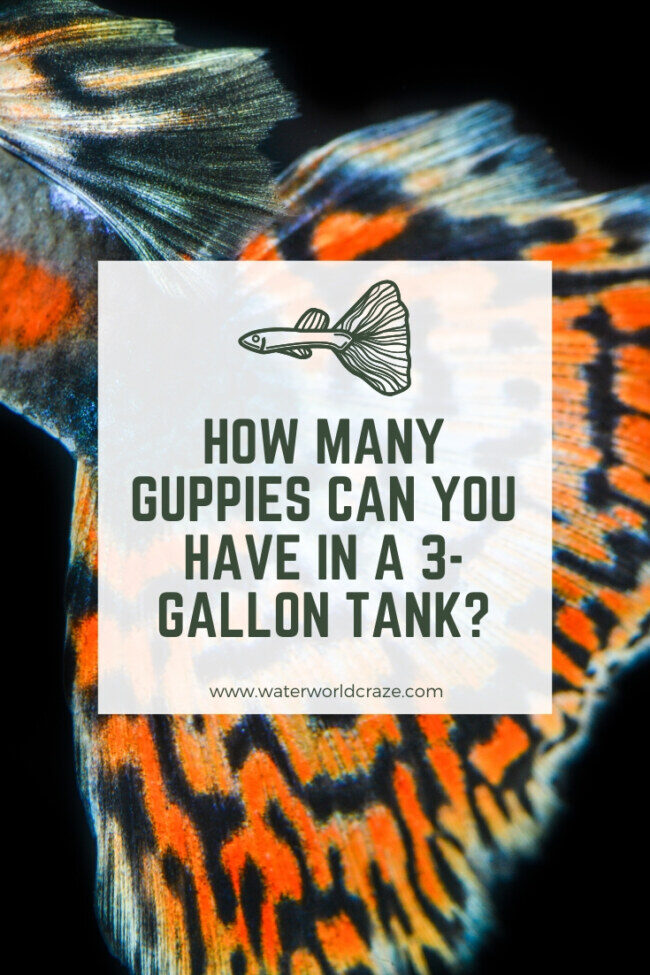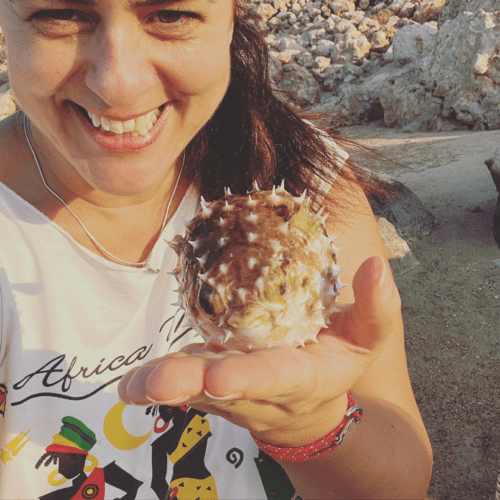 The colorful guppies are one of the most popular and easy to keep fish for both beginners and experienced aquarists. Being small, guppies don’t require large tanks to stay content however, they still need plenty of space to swim and move comfortably.
The colorful guppies are one of the most popular and easy to keep fish for both beginners and experienced aquarists. Being small, guppies don’t require large tanks to stay content however, they still need plenty of space to swim and move comfortably.
So, how many guppies can you have in a 3-gallon tank? Technically, you can keep two guppies in 3-gallons, but a tank of this size is too small for such an active fish. Furthermore, keeping the water perimeters stable is much more difficult in a smaller tank. As a rule of thumb, 10-gallon is a minimum tank size for keeping guppies.
I know this is a rather short answer, but it will do for now. Continue reading to learn how many guppies can you keep in a fish tank, how to make ideal tank conditions, and what are the most common problems with small aquariums.
Table of Contents
How Many Guppies Can You Keep In A Fish Tank?
Besides bringing plenty of color variations to tanks, guppies are also hardy and easy to keep, even if you never had fish before.
However, when it comes to guppies, overstocking is a big and common problem among beginner aquarists. Essentially, too many fish in an aquarium will cause toxins and waste to accumulate and oxygen levels to drop, which will cause all your guppies to die.
The tank in the video below might look absolutely stunning and the guppies seem to fit perfectly in there but unfortunately, it is not healthy at all for the guppies.
To avoid problems with your guppies and with your tank, you should learn how to properly stock your new aquarium.
When it comes to guppies you can follow a 1 guppy pet gallon rule or 1 inch of a guppy fish per gallon rule. Keep in mind, that male guppies are on average 0.6-1.4 inches long, and females are around 1.2-2.4 inches long if you want to avoid overstocking.
Furthermore, don’t forget that once set up, the aquarium won’t have the same holding capacity as it would without all the equipment in it. Hence, factor all of that into the equation.
If you want your guppies to grow without deformities and stay healthy, a bigger tank is always better. A spacious aquarium will offer them enough space to swim around and feel comfortable in their environment.
And although you can technically keep two guppies in a 3-gallon tank, they won’t have enough room to swim freely and can get sick due to poor water quality. Furthermore, guppies are very social and thrive living in schools.
Besides considering the number of guppies you can keep in an aquarium, you should also consider male to female ratio.
Guppies excel at reproducing, so much so, that your tank will be overrun with fry in a blink of an eye! Hence, you will have to be careful when choosing guppies for your tank if you don’t want them to breed like crazy.
To prevent unwanted breeding it is best to have more females than males, a 3:1 female to male ratio is ideal for guppies. You can also opt to keep only females or stick with a male-only aquarium.
Note that having a male-only guppy aquarium can be challenging since they will compete with one another and stronger males will end up bullying the weaker ones.
What Are Ideal Tank Conditions For Guppies?
The warm freshwater places of South America are the guppy’s natural habitat. Thus, it is very important that you do your best to mimic these conditions and create an optimal tank environment.
As with any other fish, you will have to make sure that the tank is set up properly and that the water is cycled. This will ensure that you have the right bacteria which will convert harmful compounds into less harmful ones.
While most people opt for a 10-gallon tank to keep guppies, you can also choose a bigger one. However, if you are set on a 3-gallon tank for your guppies, you will have to do a lot to ensure optimal living conditions and water quality.
One of the things you will need is a heater, that will maintain the proper water temperature between 75 and 82°F in your guppy tank. Place the heater on one end of the tank and the thermometer on the other end to check if the entire tank is heated equally.
As with a majority of fish, you will need a filter that will keep water perimeters stable. While guppies can tolerate different waters and pH levels from 5.5 – 8.5, the most ideal pH for them is between 7 – 7.2.
A hang-on filter will work for most aquariums, but if you have a mini aquarium you will need a mini power filter that won’t create strong currents.
And since maintaining the water quality in small tanks is problematic, you will also have to change 50% of the water twice a week to keep ammonia and nitrite levels in check.
Last but not least, you will need to create a pleasant environment by adding plants, rocks, and substrate to the tank.
When it comes to guppies, live plants are always a better option and you can add as much as you want since they will create hiding places and help filter the water additionally.
3 Biggest Problems When Keeping Guppies In Small Aquarium
There aren’t a lot of things that can go wrong when you keep guppies in an aquarium that is too big. When it comes to fish, no matter how small they are, a bigger aquarium is always better!
On the other hand, many things can go wrong when you have an aquarium that is too small.
Let’s take a look at the biggest problems:
1. Stunted Growth
How many times have you heard people saying fish only grow to the size of their tank? Probably a few times, if I have to guess.
Clearly, this isn’t true, but unfortunately, many people believe it is.
Any fish, including guppies, will have the urge to reach its full size regardless of the size of its tank. What actually happens is that the fish’s growth is stunted by the lack of space and as a result, its health is permanently damaged.
2. Shorter Lifespan
Living in an undersized aquarium will not only stunt your guppy’s growth, but it will also significantly shorten its lifespan. This happens for two different reasons.
First of all, guppies who live in small tanks get stressed out more easily. This added stress places an extreme amount of pressure on the heart causing it to overwork.
Secondly, living in tight quarters causes internal organ failure. As mentioned above, living in a smaller tank results in stunted growth.
This means that the guppy’s internal organs won’t have enough space to grow and develop normally, which ultimately results in organ failure and premature death.
3. Aggression
Last but not least, living in an undersized aquarium can cause behavioral problems.
Guppies can develop several behavioral problems and become stressed, anxious, or fearful. However, enhanced aggression is probably the most common issue.
Living in a small aquarium can cause a guppy to become aggressive towards its tank mates if it has any. This usually happens because the fish is stressed out or scared, and is trying to relieve the discomfort by attacking other fish.
Although guppies have peaceful temperaments, it is hard to turn them back to being friendly once they become aggressive and introduce them to a community once again. We explain more on aggression in guppies and solutions for that here!
It’s much easier to avoid aggression and other issues altogether by keeping guppies in a properly set up and spacious tank!

Marta, the driving force behind WaterWorldCraze.com, holds a Master’s degree in Marine Biology and has extensive experience in water sports and activities. With over 7+ years of hands-on experience in marine research and conservation, she has participated in numerous underwater expeditions and projects. Her passion for the aquatic world shines through in her expertly curated content. Join Marta as she explores the wonders of marine life and shares her adventures. Connect with her on Instagram @marinebiologymarta for more insights and updates.

